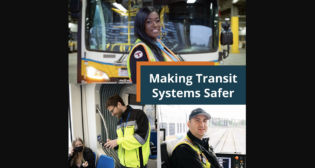
Lose rail vote? Comeback may be sooner than you think
Written by Lyndon Henry
When a community decides that a new rail transit system is essential to meet its mobility needs, it's not enough to design a good project. You've got to find a way to finance it. Often, that means a public vote to authorize some kind of new financing mechanism.
 Or there might be other reasons for a ballot over rail — a public referendum, for example.
Or there might be other reasons for a ballot over rail — a public referendum, for example.
Whatever the case, ballot campaigns over proposed rail projects are usually hard fought. Proponents sometimes try to rally support with claims that “This is our only chance for rail!” or “Building support for another project will take decades …”
Indeed, in some cases, rail ballot measures have failed, and for rail advocates, losing a campaign can seem like a devastating blow. But are “doom and gloom” attitudes justified?
Probably not, according to a recent study by the Light Rail Now Project of the Texas Association for Public Transportation (TAPT, for which I’m a technical consultant). Basically, recent data suggest that — if the local transit agency or civic leadership reworks a rail transit proposal or ballot package to respond to local concerns (and that’s a big “if”) — a revised rail transit measure tends to pass within just a few years.
In a few cases, such as Spokane, Wash., and Columbus, Ohio, after the failure of rail initiatives, the local transit leadership has just seemed to drop their hopes for rail transit altogether and move on to other options like bus-based plans. However, the TAPT study, examining cases since 2000, focused on examples where, after a rail ballot measure was initially lost, local leaders regrouped, forged a new rail plan, and continued forward to put rail back on the table before voters. And amazingly, in all those cases, the revote was successful for rail.
All told, since 2000 this has happened in six cities: Austin, Tex.; Kansas City, Mo.; Cincinnati, Ohio; Tucson, Ariz.; Seattle, Wash.; and St. Louis. The “regroup and re-vote” took longer in some cities than others, but the mean delay between the first (failing) vote and the second (successful) was 3.8 years. In other words, failure doesn’t have to mean a setback of “decades” but, on average, less than four years!
And the news is even better for cities that already successfully operate some form of rail transit — in this study, St. Louis (Metrolink light rail) and Seattle (Sounder regional rail). In those cases, the mean time to rework a proposal and re-submit it for a successful outcome was just 1.5 years!
The bottom line message seems to be: Hang in there! The public can be convinced about the need for rail transit, with the right project and perhaps the right ballot measure package.
Where rail transit has seemed to totally fizzle for a community, it appears to have been a failure of political will and determination by the local civic or transit agency leadership. As the TAPT study conclusion puts it:
‘”The process of re-submitting a rail transit measure to a vote may depend not so much on public attitudes but on the determination of sponsoring officials, their responsiveness to public input, and their willingness to re-craft specific project details to more closely conform to public needs and desires.”



